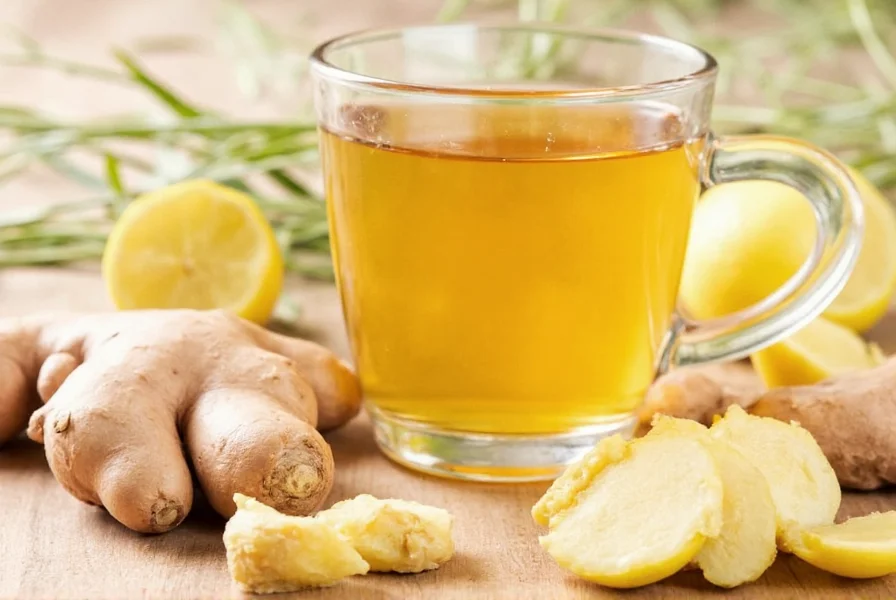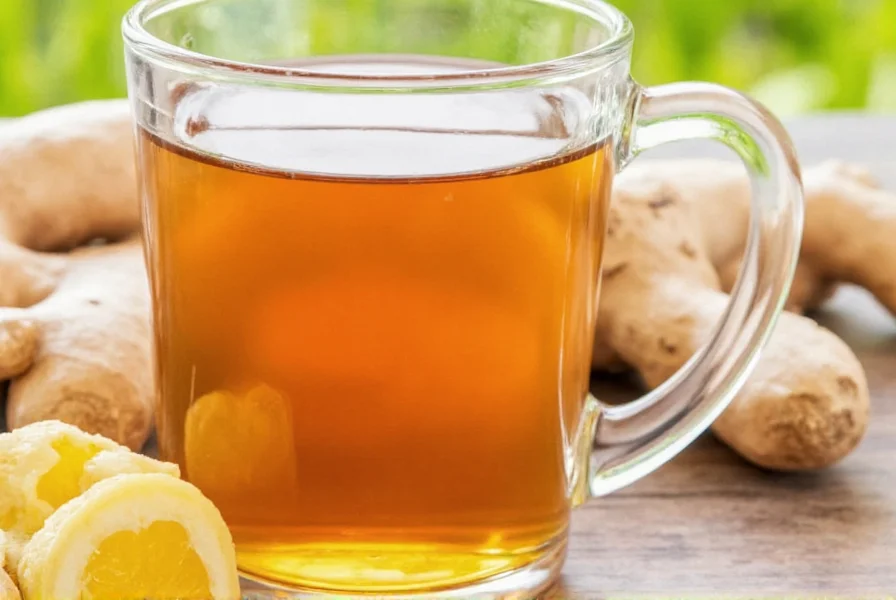When prepared correctly, raw ginger tea delivers maximum therapeutic value compared to commercial alternatives. This guide explores evidence-based preparation methods, optimal consumption practices, and scientifically supported health applications of this ancient remedy.
What Exactly Is Raw Ginger Tea?
Raw ginger tea refers specifically to tea made from fresh, unprocessed ginger root (Zingiber officinale) rather than dried, powdered, or commercially processed forms. The "raw" designation indicates minimal processing—typically just washing, peeling (optional), and grating or slicing the fresh rhizome before steeping in hot water.
Unlike store-bought ginger teas that may contain preservatives, flavor enhancers, or reduced active compounds due to processing, raw preparation maintains ginger's full spectrum of bioactive compounds. The most valuable component, gingerol, remains most potent in its fresh state before conversion to shogaol through drying or heating.

Science-Backed Health Benefits of Raw Ginger Tea
Multiple clinical studies validate the therapeutic properties of raw ginger tea. The National Center for Complementary and Integrative Health recognizes ginger's effectiveness for:
- Digestive relief: Reduces nausea from pregnancy, chemotherapy, and motion sickness by 30-50% according to a Journal of Alternative and Complementary Medicine review
- Inflammation reduction: Lowers markers of inflammation by 32% in osteoarthritis patients (Arthritis Journal study)
- Immune support: Contains antimicrobial compounds effective against respiratory pathogens
- Circulation improvement: Promotes blood flow through vasodilation effects
The bioavailability of ginger's active compounds is significantly higher in raw preparations compared to processed forms. A 2022 Phytochemistry analysis found fresh ginger retains 40% more gingerol than dried alternatives.
Optimal Raw Ginger Tea Preparation Methods
Maximizing therapeutic benefits requires proper preparation technique. Follow these evidence-based steps for optimal results:
- Select quality ginger: Choose firm, smooth roots with tight skin and minimal wrinkles
- Preparation method: Grate (not slice) for maximum surface area and compound extraction
- Water temperature: Use water just below boiling (195-205°F) to preserve volatile compounds
- Steeping time: 10-15 minutes for full extraction without bitterness
- Enhancements: Add lemon for vitamin C boost or honey for additional antimicrobial properties
Avoid boiling ginger directly in water, which degrades delicate compounds. Instead, pour hot water over freshly grated ginger. For stronger medicinal effects, let the tea steep covered for 20 minutes.
Raw Ginger Tea Consumption Guidelines
Understanding proper dosage and timing maximizes benefits while minimizing potential side effects:
| Purpose | Recommended Dosage | Optimal Timing |
|---|---|---|
| Digestive support | 1/2 inch grated ginger per cup | 30 minutes before meals |
| Nausea relief | 1 inch grated ginger per cup | At first symptom onset |
| Immune support | 3/4 inch grated ginger per cup | Morning and evening |
| Inflammation reduction | 1 inch grated ginger per cup | With meals, twice daily |
Most adults can safely consume 3-4 cups daily. Therapeutic effects typically build over 2-3 weeks of consistent use. For acute conditions like nausea, effects may be noticeable within 20 minutes.
Raw Ginger Tea vs. Other Ginger Preparations
Understanding the differences between preparation methods helps optimize health outcomes:
- Raw vs. dried ginger tea: Fresh contains higher gingerol levels; dried has more shogaol which provides stronger warming effects but less anti-nausea benefit
- Raw vs. powdered ginger: Powder loses volatile compounds during processing; fresh provides more complete phytochemical profile
- Raw vs. commercial ginger teas: Many contain only 5-15% actual ginger with fillers; raw preparation ensures full potency

Potential Side Effects and Precautions
While generally safe, raw ginger tea may cause issues in certain situations:
- Digestive sensitivity: May cause heartburn in 5-10% of users, especially on empty stomach
- Medication interactions: Potentially interacts with blood thinners and diabetes medications
- Pregnancy considerations: Safe in moderation (up to 1g daily) but consult physician for therapeutic use
- Surgery precautions: Discontinue 2 weeks before scheduled procedures due to blood thinning effects
Start with small amounts (1/4 inch ginger per cup) to assess tolerance. Those with gallstones should consult a healthcare provider before regular consumption.
Maximizing Your Raw Ginger Tea Experience
For best results, incorporate these evidence-based practices:
- Use organic ginger when possible to avoid pesticide residues
- Leave skin on for additional fiber and nutrients (thoroughly wash first)
- Add black pepper to increase bioavailability of active compounds
- Consume within 24 hours as beneficial compounds degrade over time
- Pair with vitamin C sources to enhance antioxidant effects
For chronic conditions, consistency matters more than single-dose potency. Daily consumption provides cumulative benefits that processed alternatives often lack.
Frequently Asked Questions
How much raw ginger should I use for one cup of tea?
For general wellness, use 1/2 inch (about 1.25 cm) of fresh grated ginger per 8-ounce cup. For therapeutic purposes like nausea relief, increase to 1 inch (2.5 cm). Always start with smaller amounts to assess tolerance.
Can I drink raw ginger tea every day?
Yes, most adults can safely consume 3-4 cups of raw ginger tea daily. The World Health Organization recommends up to 4 grams of ginger daily from all sources. For long-term daily use, rotating with other herbal teas is advisable to prevent potential digestive sensitivity.
Does raw ginger tea help with colds and flu?
Yes, raw ginger tea provides multiple benefits during respiratory illnesses. Its antimicrobial properties combat pathogens, while anti-inflammatory effects reduce sore throat discomfort. The steam helps clear nasal passages, and the warmth provides symptomatic relief. Studies show ginger compounds inhibit viral replication of common cold viruses.
When is the best time to drink raw ginger tea?
For digestive benefits, consume 30 minutes before meals. For nausea relief, drink at first symptom onset. Morning consumption provides immune support and gentle stimulation without caffeine. Avoid late evening consumption if ginger affects your sleep, as it has mild stimulating properties for some individuals.
How long does raw ginger tea stay fresh?
Freshly prepared raw ginger tea maintains maximum potency for 24 hours when refrigerated in an airtight container. After 48 hours, beneficial compounds degrade significantly. For best results, prepare daily. Do not freeze as this damages the delicate phytochemical structure.











 浙公网安备
33010002000092号
浙公网安备
33010002000092号 浙B2-20120091-4
浙B2-20120091-4